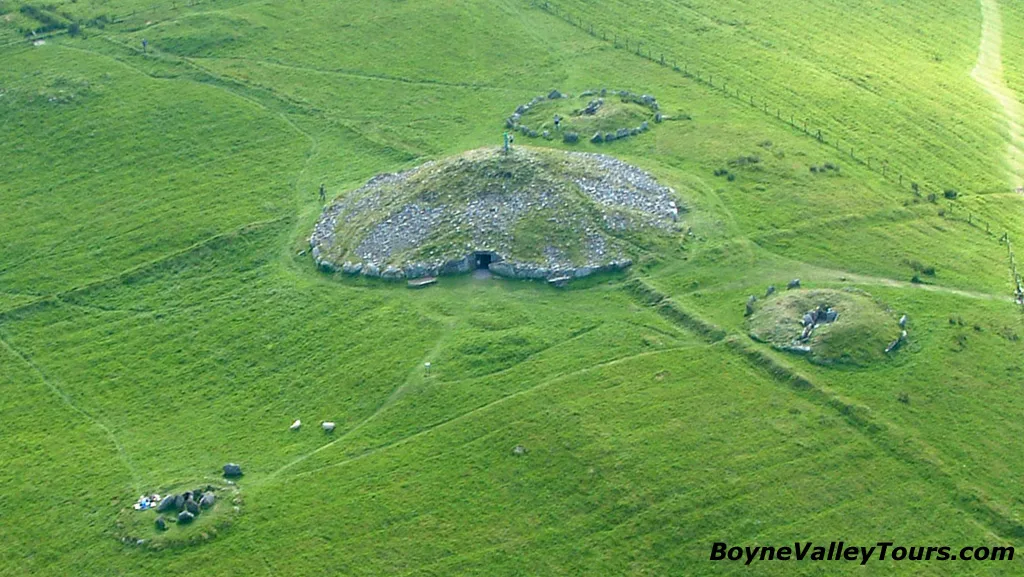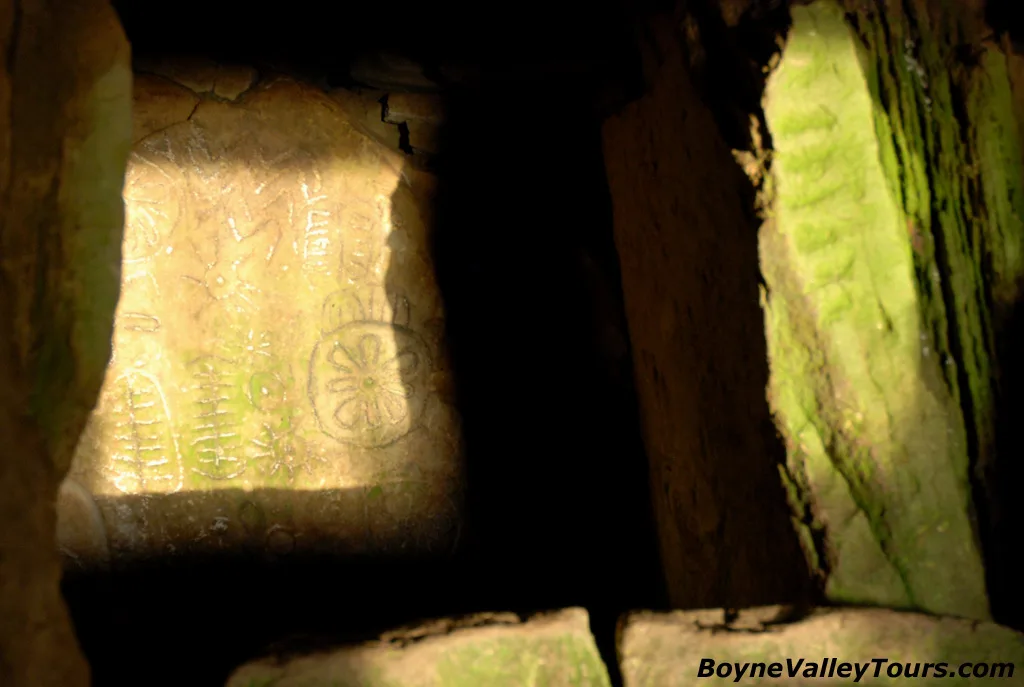 Book a tour
Book a tour
Loughcrew Megalithic Cairns
The 5,000 year old Stone Age Cairns spread across the hills at Loughcrew make up one of the three main concentrations of Passage Tombs in Ireland, the others are Brú na Bóinne (Newgrange, Knowth & Dowth) and Sligo (Carrowkeel & Carrowmore). The Cairns are spread across three hills, Carnbane East, Carnbane West and Patrickstown. The Irish name for the site is Slieve na Cailleach, which means “mountain of the hag”. Legend has it that the monuments were created when a giant hag, striding across the land, dropped her cargo of large stones from her apron.
There is public access to Carnbane East where Cairn T is the centerpiece, Carnbane West is private property and there is no public access.
Loughcrew Cairn T
In the past, it was possible for visitors to Cairn T to access the interior by obtaining a key. However, the Cairn has been closed since October 2018 due to health and safety concerns. Currently, a steel prop can be seen supporting a cracked lintel stone inside the gate of the passage tomb.
The illumination of the passage and chamber at the Winter solstice sunrise in Newgrange is world famous. Less well known is the Equinox illumination at sunrise in Cairn T at Loughcrew. The backstone of the chamber is illuminated by a beam of light at sunrise on the Spring and Autumnal Equinoxes. The sun light is shaped by the stones of the entrance and passage and descends the backstone while moving from left to the right illuminating the solar symbols.
Slieve na Cailliagh
Loughcrew Megalithic Cemetery, also known in Irish as Slieve na Cailleach, meaning the mountain of the Hag, is one of the largest megalithic cemeteries in Ireland. It consists of over thirty chambered cairns, many with interior stone carvings, spread over three hills. The cairns are over 5,000 years old and were contemporaneous with Brú na Bóinne (Newgrange, Knowth, and Dowth), but they have been less reconstructed and not extensively excavated.
Although less famous than Brú na Bóinne, Loughcrew is impressive for the number of cairns, and the stunning 360° views over undulating farmland and lakes. Most notably, Cairn T, also known as The Hag’s Cairn, is the largest on Carnbane East. Cairn T is 120 feet (37 meters) in diameter and has a circumference of 369 feet (113 meters). The narrow passageway leads to a 10 foot (3 meter) high chamber with a corbelled roof and three side chambers.
Cairn T contained fragments of charred bones, charcoal, and a bronze pin that were found during the original excavation. Several of the interior stones in the passageway and in the inner chamber are decorated with geometric patterns, including circles and zigzags, and flower and sun motifs. Most impressive is the backstone of the rear chamber, which is lit by a beam of light during spring and fall equinox sunrises. On the north side of the mound is the Hag’s Chair, a massive kerbstone shaped into a “chair.” It has carvings on the front side, but they are barely discernable now.
Carnbane West includes cairns A through L, while Carnbane East includes cairns R through W. Cairn H on Carnbane West has multiple spirals on a kerbstone, and excavations discovered first-century CE Iron Age objects. Cairn L has five side chambers and an interior carved standing stone, and it is oriented toward the Imbolc/Samhain sunrise, just like the Mound of the Hostages on the Hill of Tara. These cairns Carnbane West are not accessible to the public because the land is in private ownership.
Loughcrew megalithic tombs, the largest tomb with the stone cairn still in place is Cairn T, the surrounding ruined cairns are Cairn S, Cairn U and Cairn V.
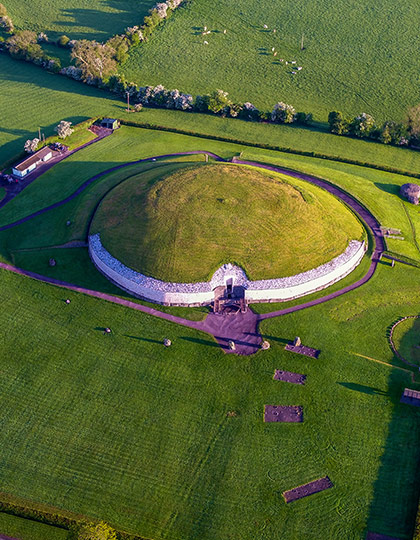
Newgrange & Boyne Valley

8hrs | €650 + Booking Fees

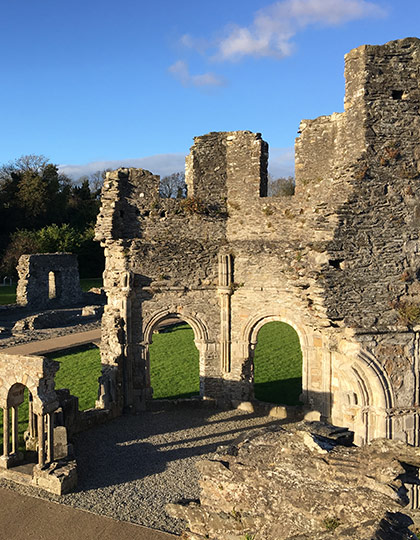
Boyne Valley Castles & Abbeys

8hrs | €650 + Booking Fees

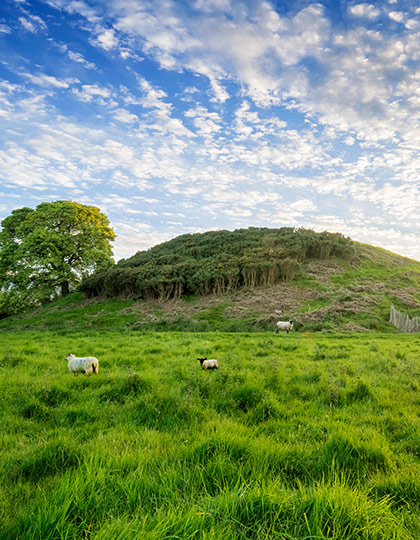
Meath Megalithic Sites

8hrs | €650 + Booking Fees


Glendalough & Scenic Wicklow

8hrs | €650 + Booking Fees


Wicklow Gardens & Scenery

8hrs | €650 + Booking Fees

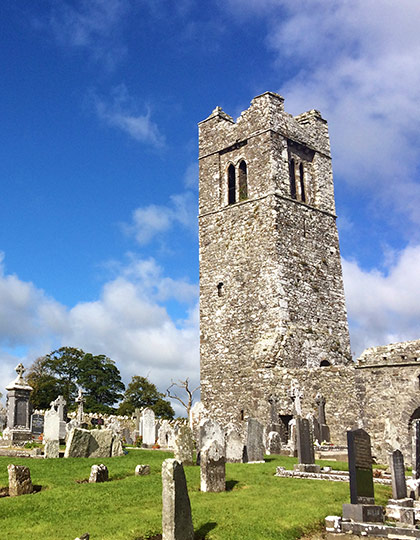
Cruise Excursions

8hrs | €650 + Booking Fees



